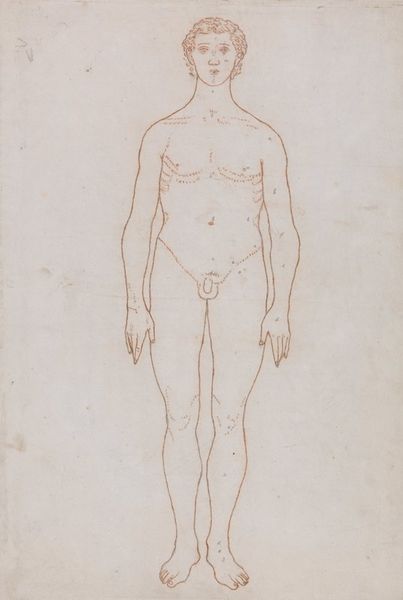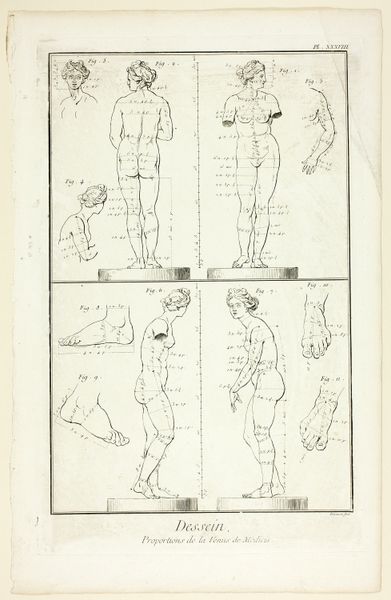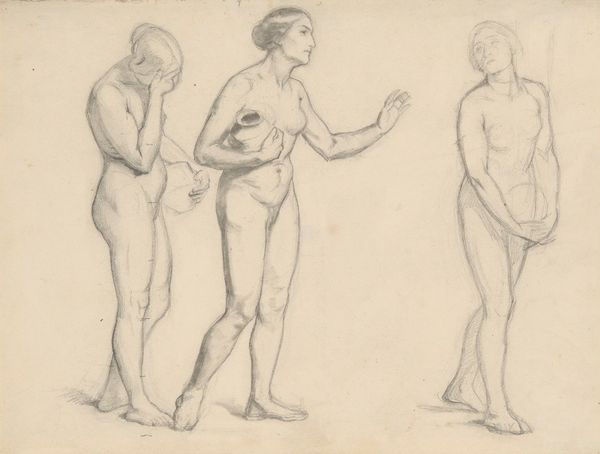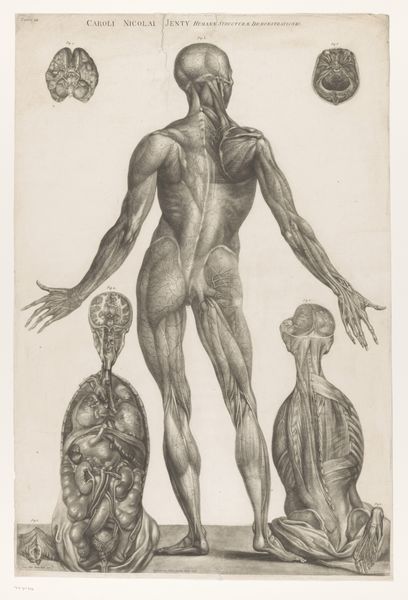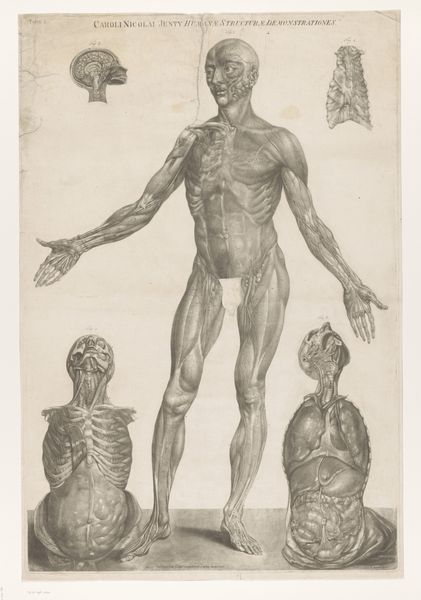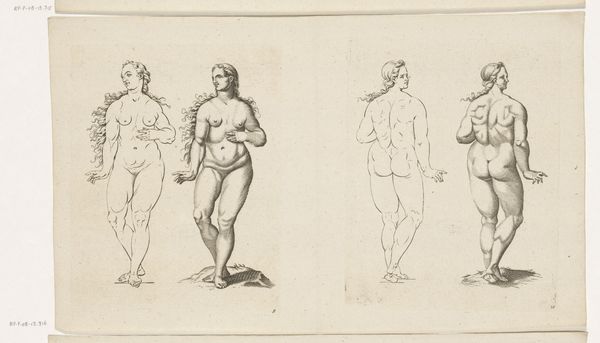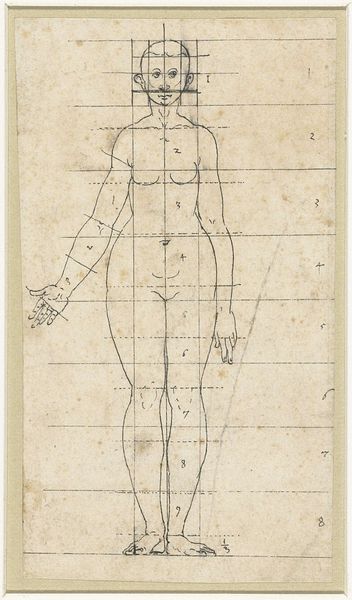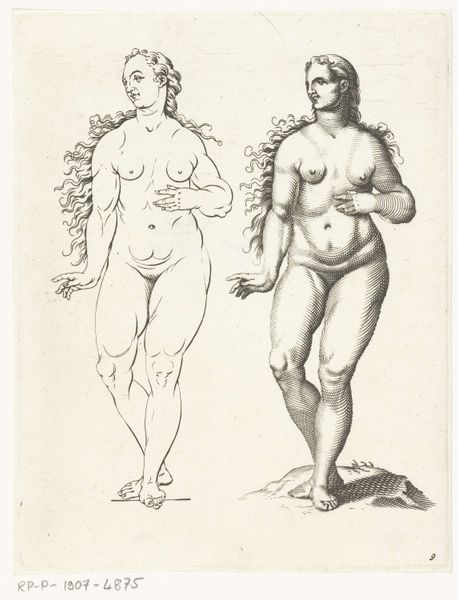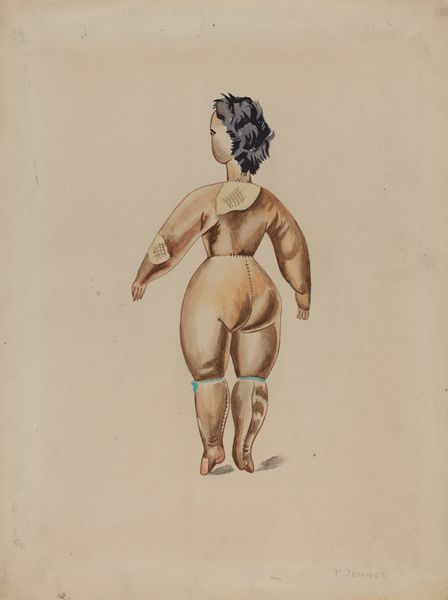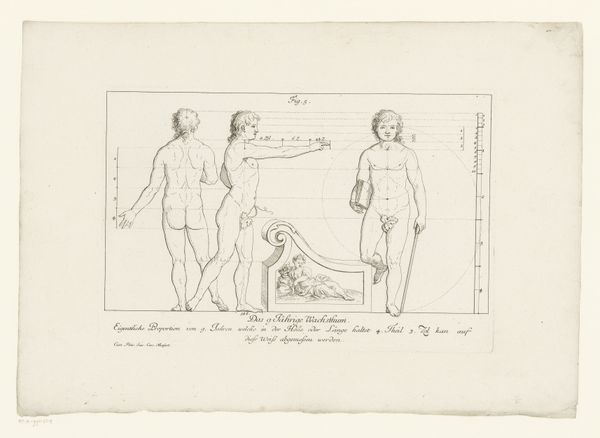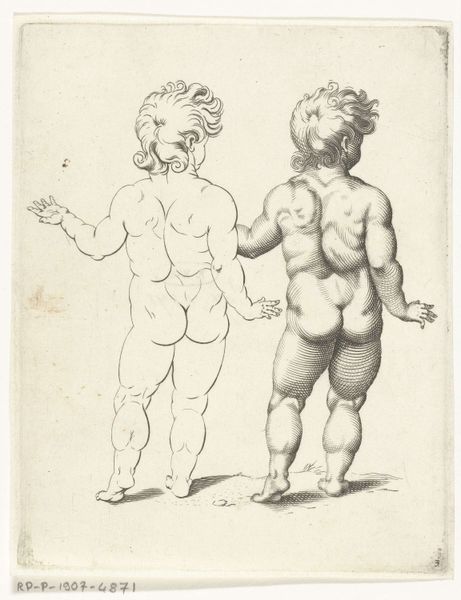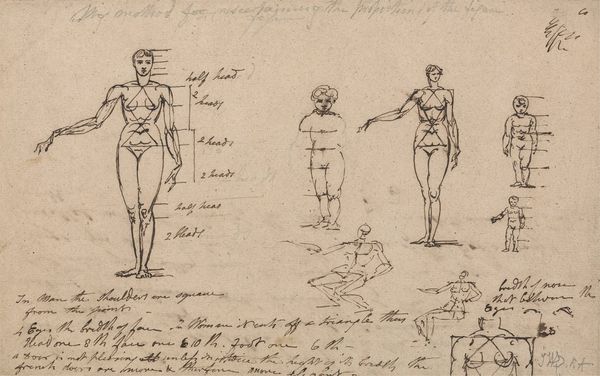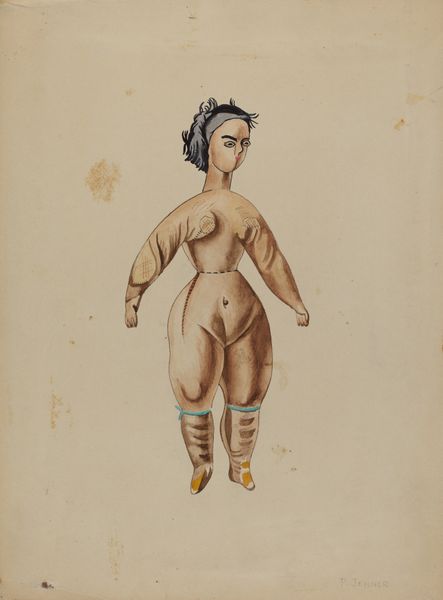
IIllustration from Dürers Vier Bucher von Menslicher Proportion, Nuremberg, 1528 1528
0:00
0:00
drawing, print, paper, pencil
#
portrait
#
drawing
# print
#
pencil sketch
#
figuration
#
paper
#
form
#
11_renaissance
#
female-nude
#
pencil
#
line
#
academic-art
#
italian-renaissance
#
male-nude
Copyright: Public Domain
This is an illustration from Albrecht Dürer's "Four Books on Human Proportion," created in Nuremberg in 1528. Published posthumously, this work reflects the Renaissance interest in classical ideals, particularly the notion of ideal beauty derived from mathematical proportions. Dürer sought to codify beauty through the lens of a white, European standard. Yet, we might reflect on how such attempts to define universal beauty are inevitably shaped by cultural and personal biases. How do these idealized forms reinforce or exclude diverse bodies and identities? Does the pursuit of perfect proportions leave room for the beauty found in difference? Consider the cultural context that shaped Dürer's work and how these historical notions of beauty persist and are challenged today. Think about the power of representation and whose bodies are deemed worthy of idealization. What do you think?
Comments
No comments
Be the first to comment and join the conversation on the ultimate creative platform.
